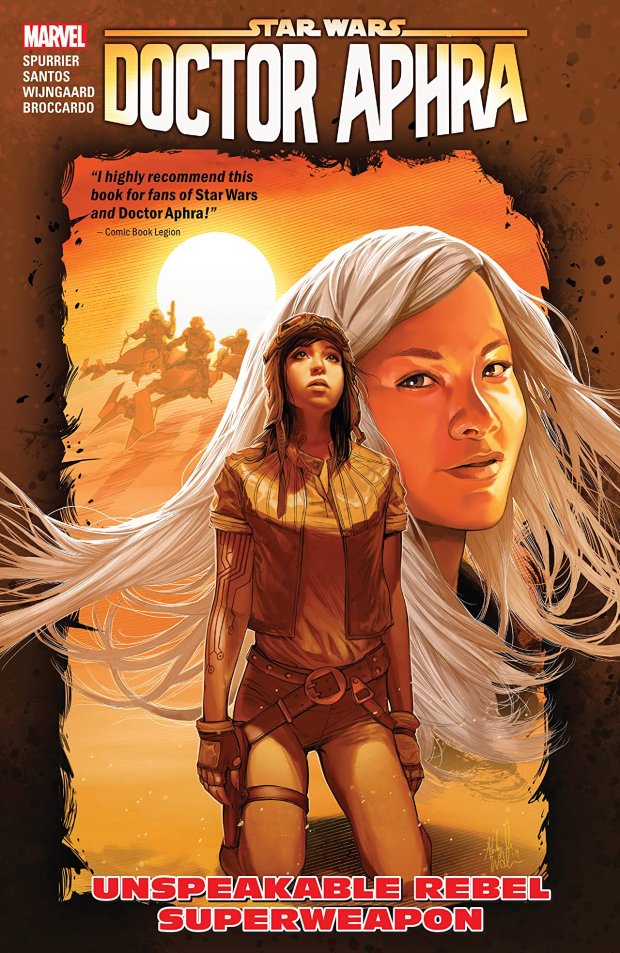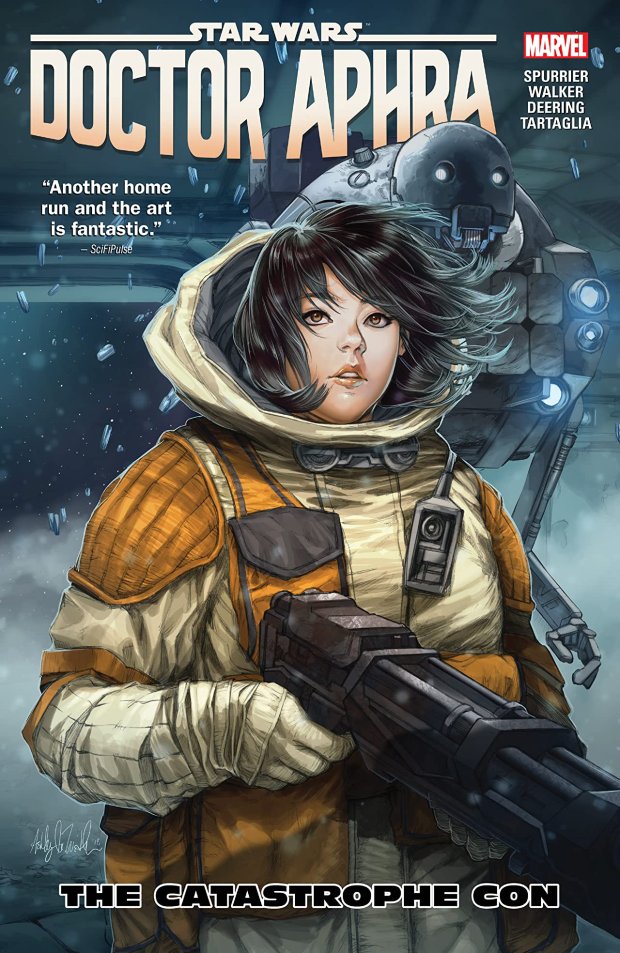By Leah Williams, Jesus Abertov, David Baldeón, Joe Caramagna
collects Gwenpool Strikes Back #1-5
original series: volumes one | two | three | four | five [complete]
Gwenpool is an anomaly in superhero comics. She’s originally from our world, and that makes her irreverent, nerdy, over the top meta, and nihilistic all at the same time; her “powers” include her comics knowledge and traversing the white space between panels. What made her special in her debut run, to me, wasn’t breaking the fourth wall; it was the way she poked fun at comics and pushed a very particular satire and commentary, as a character who understands both worlds. While Hastings’ run had its ups and downs, he managed to create some emotional resonance with Gwenpool, especially when she realized her series was coming to an end.
Instead of building on what made Gwen’s original series great, Williams rehashes Hastings’ last volume (which had major problems of its own). Gwen’s manic strategies to save her readership and continue existing in the Marvel universe are basically the same: she tries to be a villain, then switches to “sex sells” (swapping Batroc for Deadpool, and resulting in a very strange trip to the Fantastic Four home), and then she organizes a Battle Royale with other superheroes that dragged on far too long. This was already overdone last time, so the rehash was unoriginal, exhausting, and frankly, artificial. Just like Hastings’ finale, we know things will end positively for Gwen, so when Williams tries to eke out something emotional, it falls flat. And very ironic that Gwen lamented the loss of her original secondary characters in volume five, knowing they wouldn’t exist outside her series, yet here they only make one nonessential appearance. Gwen did have a sweet moment with Kamala Khan towards the end of the book which was nice, since she is so often paired with male characters (even on West Coast Avengers, Gwen was almost immediately and exclusively paired with Quinten).
Compounding these problems is the humor, a staple in Gwen’s series. In Strikes Back, the humor was pretty forced. As a millennial, I’m probably no longer allowed to comment on what is cool anymore, but it often didn’t land. The slang, use of emojis and so on felt artificial and very time specific. I chuckled maybe once or twice the whole book.
I loved David Baldeón’s work on Domino and most recently Storm (two Baldeón books in a row!), and his expressive, slick style really lends itself to Gwenpool. I love how he visualized her white space-jumping, and the artist himself has a fun cameo too. The one thing that really bothered me was giving Gwen a gap, or at least a line, between her teeth. It’s a small detail but really changed her look and I wasn’t a fan.
Gwen is all about taking risks and I wish Williams had gone in a bolder new direction with her character instead of largely repeating her former arc.





